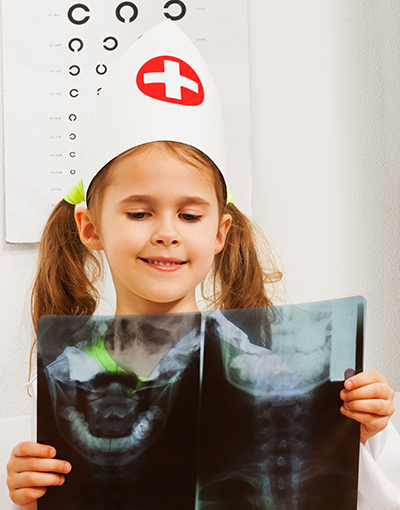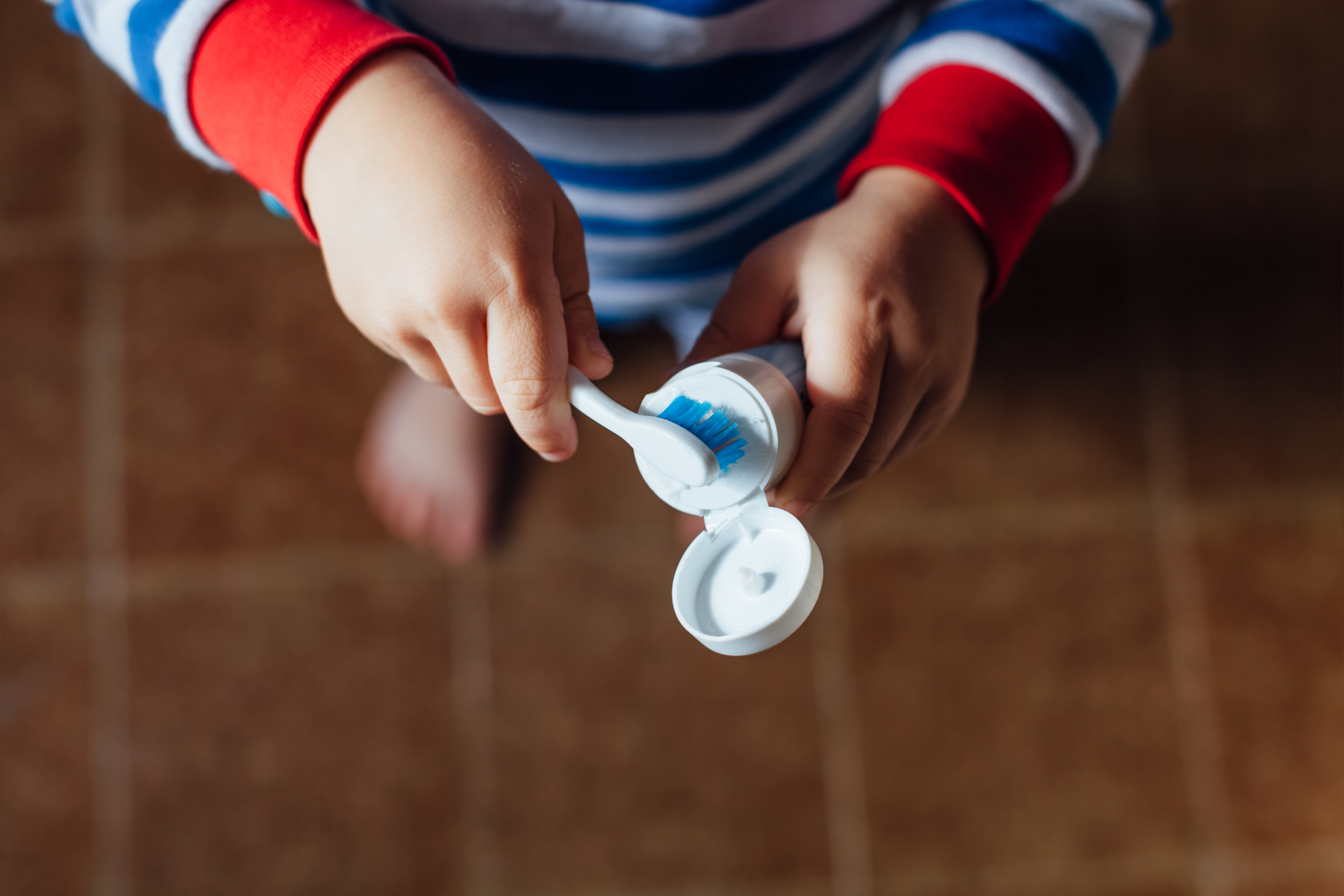
What Are Dental X-Rays?
Dental X-rays do so much more than just detect cavities. Pediatric dentists use X-rays to help them see how your child’s teeth are developing and erupting, diagnose bone disease, evaluate an injury or plan orthodontic treatment. These X-rays allow your dentist to take a deeper look at your child’s oral health and treat conditions that wouldn’t be detected during a routine cleaning or exam.
Why Children Need Dental X-Rays
Children’s mouths grow and change so rapidly that they generally need X-rays more often than adults. In addition, children’s teeth tend to be more susceptible to tooth decay than adults. Dental X-rays provide a great benefit for dentists to be able to evaluate kids’ different needs, such as:
- Finding any teeth that may be missing or extra teeth growing below the gumline
- Discovering any signs of infection
- Evaluating the need for orthodontic treatment
- Getting an idea of how adult teeth will erupt and look once they take the place of baby teeth
How Safe Are Dental X-Rays for Kids?
Our pediatric dentists take radiation exposure very seriously and are particularly careful to minimize the amount of exposure a patient receives. Our offices are equipped with many safeguards, such as lead aprons, high-speed film, digital X-rays and thyroid collars. With these precautions in place, the amount of radiation received in a dental X-ray is extremely low. Dental X-rays help our dentists discover undetected dental problems that pose an even greater risk to your child’s health.
Should I Be Worried About Radiation Exposure?
When it comes to modern medicine, dental X-rays have one of the lowest rates of radiation exposure. The amount of radiation your child is exposed to during a dental X-ray is the same as what you would be exposed to on a one to two hour flight. Our dentists take precautions such as a thyroid collar and lead aprons to minimize the amount of exposure during an X-ray.
When Children Should Get X-Rays
Your pediatric dentist determines the frequency of x-rays based on your child’s individual needs, and only recommends X-rays when necessary. For high caries risk patients, the American Academy of Pediatric Dentistry (link) recommends X-rays every 6 months to one year. Children with a low risk of tooth decay may require X-rays less frequently.
At Dentistry for Children, we follow the American Academy of Pediatric Dentistry’s guidelines for prescribing cavity detecting X-rays based on your child’s caries risk assessment. We assess these risks at your child’s visit and determine the best prescription for your child’s X-rays.
Different Types of Dental X-Rays
There are a few different types of exercise used by pediatric dentists, and they all serve a specific purpose. Here are the four main types:
- Bite-wing X-rays: Bite-wing X-rays are used to take a look at the crowns of the back teeth and help dentists see if there is any decay between the back molars. This ability to look closely at a specific area not only helps with detecting decay, but also helps dentists see changes in the jawbone caused by gum disease. By taking a photo of each side of the jaw, the X-ray creates one cohesive image, so your dentist can get a good look.
- Panoramic X-rays: Just like a panoramic photo, a panoramic X-ray takes a panoramic shot of your mouth. This special machine takes one picture of your whole mouth, allowing dentists to see everything at once. Panoramic X-rays are commonly used for developing orthodontic treatment plans or diagnosing developmental issues.
- Occlusal X-rays: Occlusal X-rays, or sometimes called palatal X-rays, take a photo of the entire arc of teeth on either the bottom or top jaw. This gives dentists a way to look at tooth development and placement.
- Periapical X-rays: Periapical X-rays take a photo of the entire tooth – from root to crown. This X-ray only captures a couple teeth at a time, due to its hyper-focused picture. These X-rays help dentists see any changes in the root or bone structure.
Pediatric Dental X-Ray FAQs
Does Every Patient Have to Have X-rays Every six months?
Not all patients have to have X-rays every six months. Your child’s dentist will assess their teeth and determine the frequency of X-rays that is necessary. Dentists look at age, whether you’re a new patient or it’s a regular visit and your child’s individual dental needs.
What is the Risk of Radiation Exposure?
Our dentists are sensitive to your concern about radiation exposure, and the risk of radiation exposure is small when taking a dental X-ray. We only prescribe X-rays when needed to lower the amount of radiation exposed to your child.
How Can We Reduce the Risk of Radiation Exposure?
Even though the risk is low, it is important to take the necessary precautions to keep the exposure as low as possible. Our dentists only prescribe X-rays when necessary. We also keep up with state-of-the-art technology to ensure your child is getting the most up to date method of dental X-rays. During the X-ray, your child will also wear a thyroid collar and protective shields to ensure they are protected from even the littlest amount of radiation.
Header: Contact Us to Schedule an X-Ray Appointment for Your Child
Have questions about dental X-rays? Is your child in need of dental X-rays? Schedule an appointment at any of our 22 locations in the greater Atlanta area. Our dedicated team of dentists is here to help!




 Find Us
Find Us